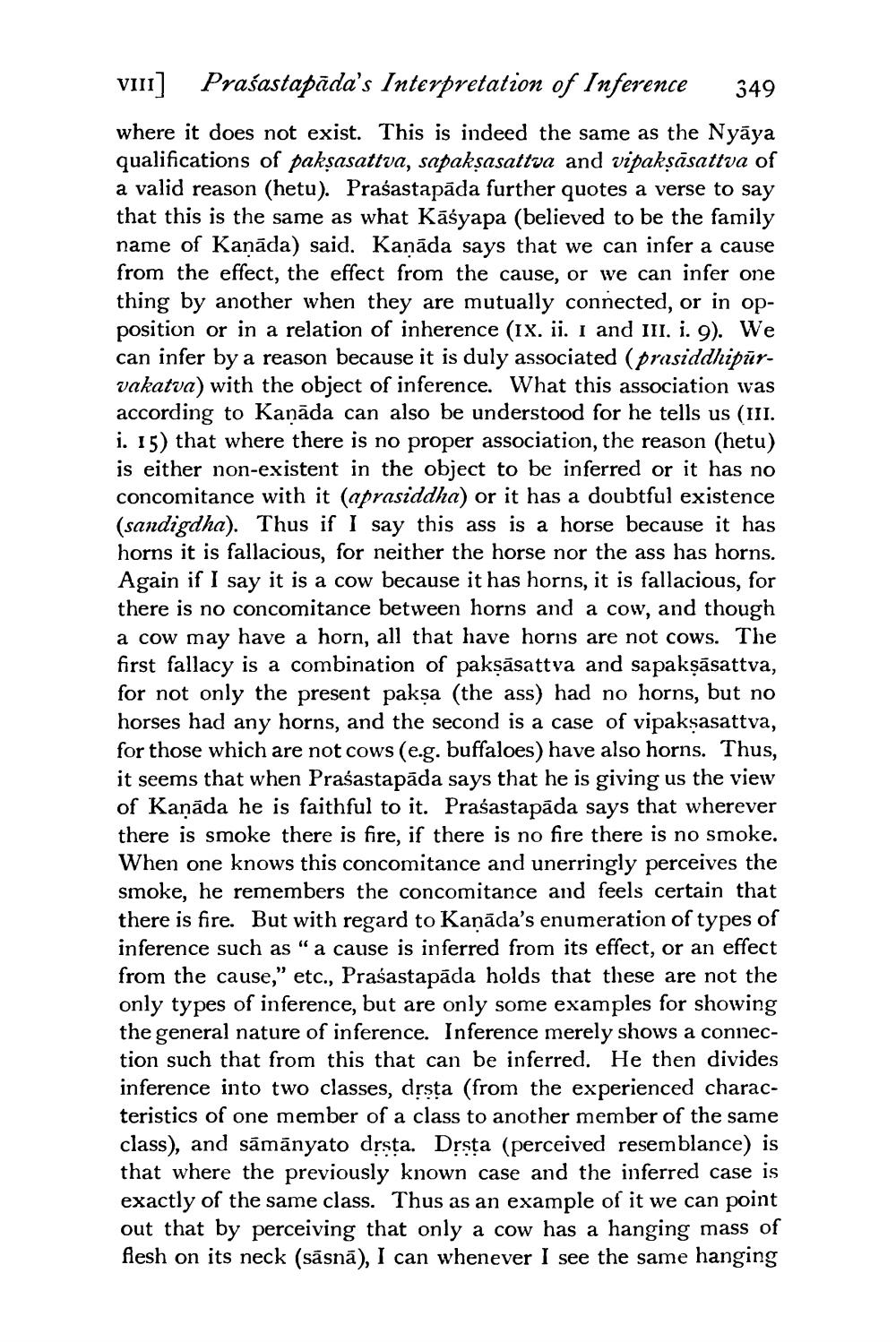________________
VIII]
Prasastapāda's Interpretation of Inference
349
where it does not exist. This is indeed the same as the Nyaya qualifications of pakṣasattva, sapakṣasattva and vipakṣāsattva of a valid reason (hetu). Prasastapāda further quotes a verse to say that this is the same as what Kasyapa (believed to be the family name of Kanāda) said. Kaṇāda says that we can infer a cause from the effect, the effect from the cause, or we can infer one thing by another when they are mutually connected, or in opposition or in a relation of inherence (IX. ii. I and III. i. 9). We can infer by a reason because it is duly associated (prasiddhipurvakatva) with the object of inference. What this association was according to Kanāda can also be understood for he tells us (III. i. 15) that where there is no proper association, the reason (hetu) is either non-existent in the object to be inferred or it has no concomitance with it (aprasiddha) or it has a doubtful existence (sandigdha). Thus if I say this ass is a horse because it has horns it is fallacious, for neither the horse nor the ass has horns. Again if I say it is a cow because it has horns, it is fallacious, for there is no concomitance between horns and a cow, and though a cow may have a horn, all that have horns are not cows. The first fallacy is a combination of pakṣāsattva and sapakṣāsattva, for not only the present paksa (the ass) had no horns, but no horses had any horns, and the second is a case of vipakṣasattva, for those which are not cows (e.g. buffaloes) have also horns. Thus, it seems that when Prasastapāda says that he is giving us the view of Kanāda he is faithful to it. Prasastapāda says that wherever there is smoke there is fire, if there is no fire there is no smoke. When one knows this concomitance and unerringly perceives the smoke, he remembers the concomitance and feels certain that there is fire. But with regard to Kanāda's enumeration of types of inference such as "a cause is inferred from its effect, or an effect from the cause," etc., Prasastapāda holds that these are not the only types of inference, but are only some examples for showing the general nature of inference. Inference merely shows a connection such that from this that can be inferred. He then divides inference into two classes, dṛṣṭa (from the experienced characteristics of one member of a class to another member of the same class), and sāmānyato dṛsta. Drsta (perceived resemblance) is that where the previously known case and the inferred case is exactly of the same class. Thus as an example of it we can point out that by perceiving that only a cow has a hanging mass of flesh on its neck (sāsnā), I can whenever I see the same hanging




